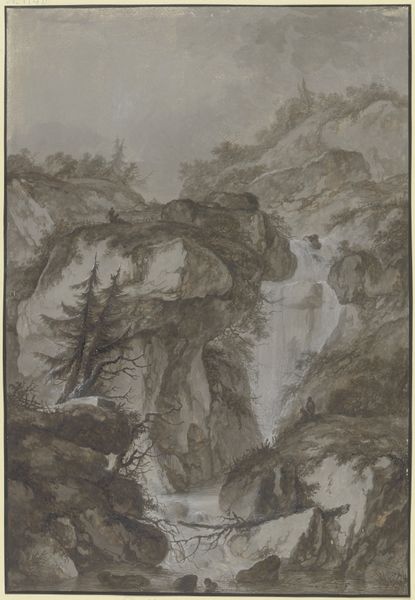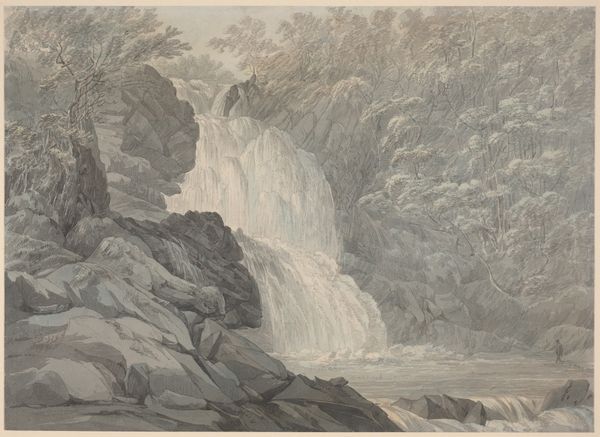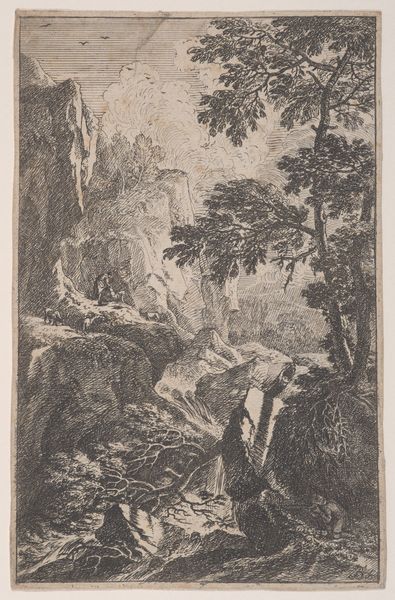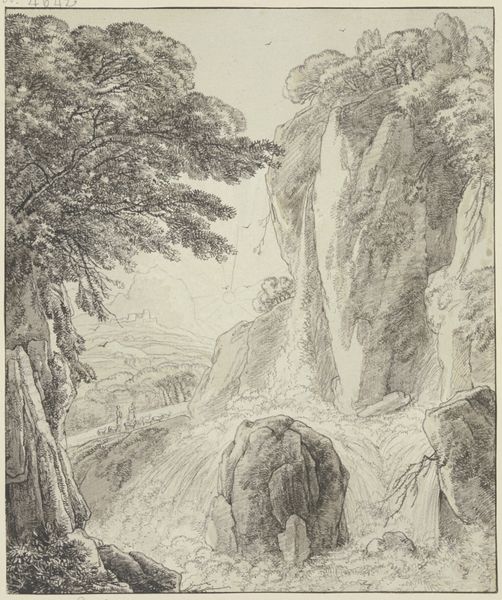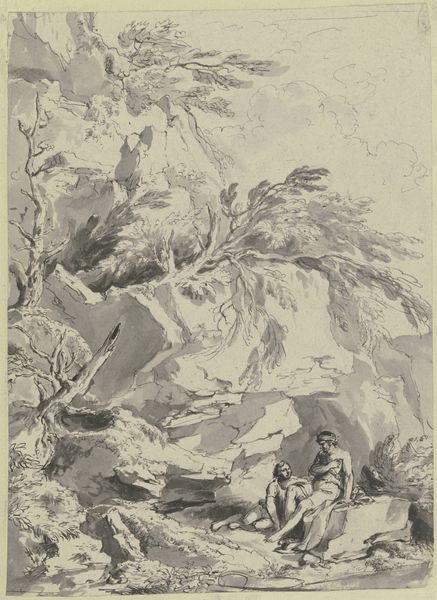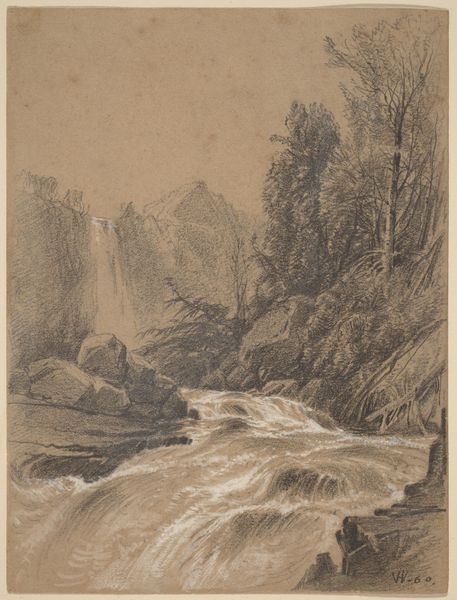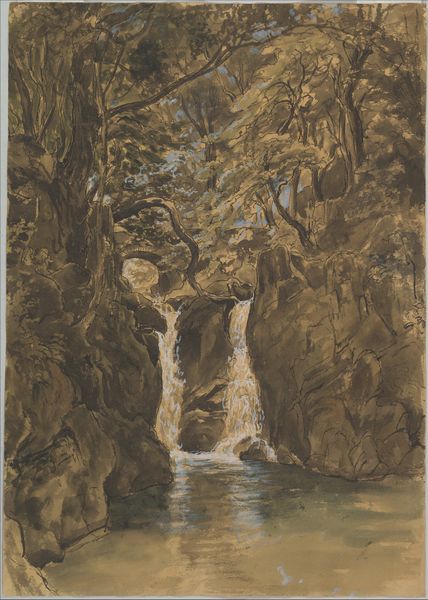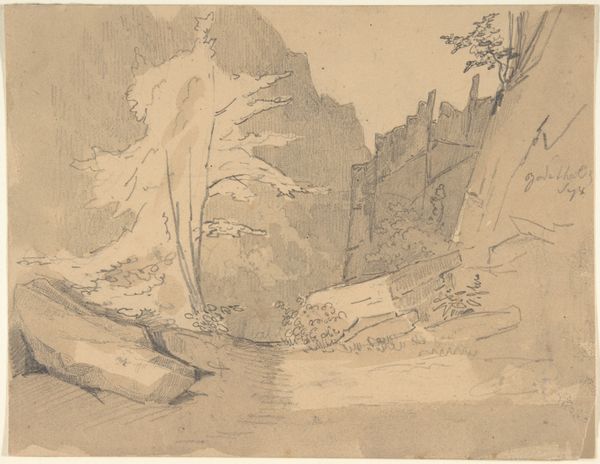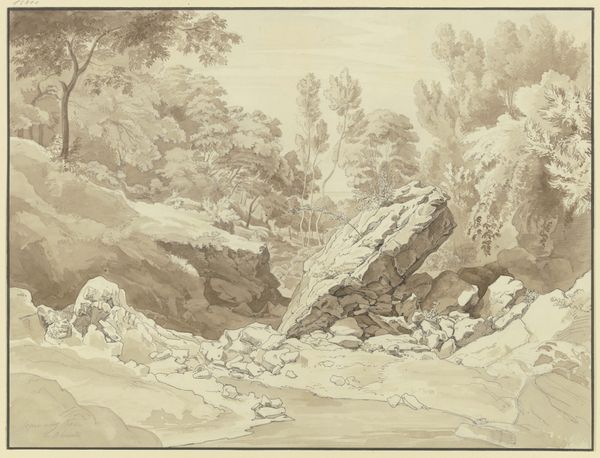
drawing, tempera, watercolor
#
drawing
#
tempera
#
landscape
#
charcoal drawing
#
charcoal art
#
oil painting
#
watercolor
#
romanticism
Copyright: Public Domain
Curator: This is Johann Jakob Schillinger's work, "Waterfall, with a Painter in the Foreground." It is executed in tempera and watercolor. Editor: It's…muted. Everything feels softened, as if veiled in mist, despite the clearly defined forms. And that solitary figure...he looks so small against this powerful landscape. Curator: Schillinger's landscape really exemplifies Romanticism. The materials themselves are crucial here – the application of watercolour and tempera allowing for this atmospheric, somewhat dreamlike effect. Note the contrast with the sharply rendered rocks and waterfall; this would have required very deliberate handling of the pigments. Editor: Precisely. This reminds us of the Enlightenment and its aftermath when we are reassessing humanity’s relationship with the environment. What do you make of his gaze and posture? It suggests the artist as observer and interpreter of the natural world, a world that both dwarfs and inspires him. He is present, yet seemingly disconnected from it. Curator: A very perceptive insight. Thinking about production again: the creation of watercolors during this period became more accessible to a growing class of artists. How did changes in the accessibility and distribution of materials such as paints enable different class or gender positions in painting practices, particularly in landscape? This surely affected artistic movements and creative expression. Editor: It’s the artist who mediates our connection with nature, reinforcing colonial narratives of accessing resources while creating artificial barriers, and I see what you mean. This image becomes an ideological project where nature serves as a theater for human experience and endeavor. The artist isn't merely representing nature; he is also defining a particular relationship to it. Curator: And, as the role and supply of paint materials changes, it further enables changes in how the work, here, is viewed and valued. And therefore consumed by the patron…It’s a dense knot of artistic practice. Editor: Indeed, this is not simply a pretty view; it is steeped in the politics of the time. Seeing the labour, access and relationship here provides such a fresh viewing point. Curator: Agreed, considering both social context and production deepens our view so remarkably.
Comments
No comments
Be the first to comment and join the conversation on the ultimate creative platform.
